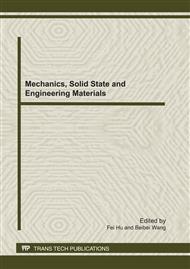p.307
p.313
p.318
p.327
p.333
p.339
p.345
p.350
p.356
Measurement for the Damping Coefficient in Standard-Beam Balance Oscillating System
Abstract:
Damping coefficient is an important parameter in the system of swinging balance. There are various factors, such as knife hysteresis and the air resistance around the swinging balance, which influence the damping coefficient during the swing process. The energy of the balance and the amplitude of the oscillation will decay with time. It will stop swinging in numerable period. This damping phenomenon prevents us from measuring the oscillation period. So we need to analyse and study the damping coefficient. In this paper, we firstly analyse the working principle of the swinging balance, and then we measure the damping coefficient in different driving frequencies using experimental method and spectrum analysis. In the end, we get the evolution of damping coefficient under different driving frequencies.
Info:
Periodical:
Pages:
333-338
Citation:
Online since:
July 2011
Authors:
Price:
Сopyright:
© 2011 Trans Tech Publications Ltd. All Rights Reserved
Share:
Citation:


